Discovering Western Kenya’s hidden worlds of adventure, culture, and nature
Sponsored by Kenya Tourism Board
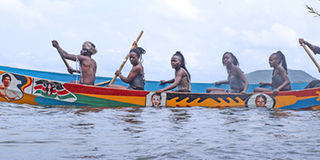
A display of boat rowing during the Rusinga Cultural Festival held annually in Rusinga Island, Homa Bay County.
What you need to know:
- The Magaribi Trail Series encourages visitors to go beyond the usual, to venture past the familiar circuits and discover a region rich in history, hospitality, and unfiltered beauty
Western Kenya, long overshadowed by the country’s iconic savannah safaris and white-sand beaches, is now stepping confidently into the spotlight through the Magaribi Trail Series, a central feature of the broader Magical Kenya Trail Series.
This trail invites travellers to immerse themselves in the untouched beauty, cultural richness and outdoor thrill that define the landscapes of Homa Bay, Siaya and Kakamega. These destinations are not only captivating in their own right, but they collectively represent a fresh chapter in Kenyan tourism that champions authenticity, sustainability, and meaningful travel.
In Homa Bay, which is on the eastern shores of Lake Victoria, visitors are welcomed by a tranquil blend of scenic lakeside views, green hills, and lively rural communities whose daily rhythms remain deeply connected to the waters of the lake. The hum of fishing boats, the laughter from local markets, and the rustle of lakeshore vegetation form the backdrop to a travel experience rooted in nature and community.
One of Homa Bay’s most compelling experiences is the rare opportunity to embark on a wild cycling expedition through Ruma National Park. Here, instead of sitting in a safari van, you ride a bike through a wilderness sanctuary that is home to Kenya’s last population of the endangered roan antelope. With every turn of the wheel, you are immersed in a vivid encounter with the African wild – untamed, thrilling, and refreshingly different.
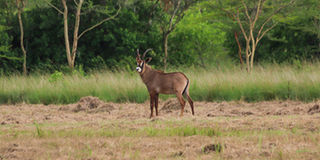
The rare roan antelope at Ruma National Park in Homa Bay County.
The adrenaline gracefully gives way to magical evenings spent beside bonfires under the stars. Rustic camps and lakeside hotels serve hearty local dishes as the flames crackle and stories are shared. These quiet moments, full of warmth and genuine connection, offer a stark contrast to the more commercial safari lodges elsewhere in the country.
For those drawn to slower, more reflective travel, Homa Bay offers calming lakeside walks, gentle hill hikes around Homa Hills, and explorations of geothermal hotspots such as Bala and Ayomo. Birdwatchers will find the lakeshore to be a paradise of migratory water birds, while photographers can capture striking cultural vignettes – fishermen casting nets, markets in full swing, or the sun rising and setting in fiery hues over the lake.
The adventure continues across the water, thanks to the scenic Luanda Kotieno ferry that transports visitors to Rusinga Island. Once remote, the island is now accessible via a modern bridge connecting it to the mainland at Mbita Point.
Rusinga charms with its serene beauty, cultural depth, and slower pace of life, offering visitors a chance to reconnect with nature and heritage alike.
Northwest of Homa Bay, Kakamega introduces a completely different but equally enchanting environment. Home to Kenya’s only tropical rainforest, Kakamega is a realm of green wonder and biodiversity. The Kakamega Forest National Reserve, a remnant of the ancient Guineo-Congolian rainforest, envelops visitors in cool breezes, lush vegetation, and a chorus of bird calls, making it an ideal destination for nature lovers and fitness-conscious travellers alike.
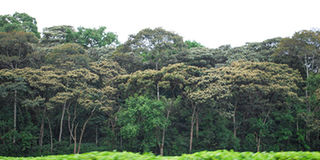
A section of Kakamega Forest.
Cycling routes wind through vibrant tea plantations and bustling village paths before entering the heart of the forest, where one can dismount and hike under a towering canopy of indigenous trees. With over 360 bird species, 400 butterfly types, and numerous primates including De Brazza’s monkeys, the forest is alive with rare encounters. For the adventurous soul, treks through the forest lead to treasures like the serene Isiukhu Falls and the hauntingly beautiful Crying Stone of Ilesi, a natural monolith from which water continuously drips, imbued with local legend and spiritual significance.
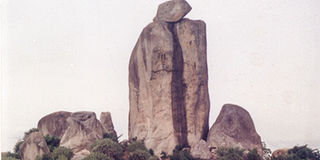
The crying stone of Ilesi in Kakamega County.
Yet Kakamega offers more than just natural allure. It is a gateway into Western Kenya’s cultural soul. Travellers are invited to sit beneath ancient fig trees like Mama Mtere, where elders tell stories steeped in tradition. Visits to butterfly farms and night forest walks reveal the hidden rhythms of the land, from nocturnal birds to bats and frogs calling in the dark.
The beauty of the Magaribi Trail lies not only in its destinations, but in its underlying philosophy. Spearheaded by the Kenya Tourism Board’s Heritage Trails Expedition, the trail promotes community-based tourism that empowers local economies, preserves indigenous knowledge, and fosters environmental stewardship. Along the journey, travellers are encouraged to take part in tree planting, enjoy homegrown culinary experiences, and engage with cultural groups through dance, crafts, and oral storytelling.
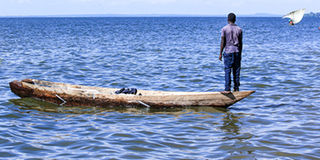
A fisherman observes the water at Luanda Kotieno on the shores of Lake Victoria, in Siaya County.
Climate across the region is mostly warm and inviting, with two rainy seasons (April to June and October to November), and dry periods from January to February and July to August that offer perfect windows for hiking, cycling, birdwatching, and photography.
Homa Bay and Kakamega are both accessible by road from Kisumu, with Homa Bay located roughly 60km west, and Kakamega just under an hour’s drive north. From Nairobi, one can reach either destination within a day’s journey by car or a short domestic flight into Kisumu.
Accommodations along the trail cater for a range of travellers, from cozy homestays and simple campsites near Lake Victoria to ecolodges nestled in the Kakamega forest. Whether you’re a solo backpacker, an adventure couple, a cultural explorer, or a wellness seeker, the Magaribi Trail promises an experience that nourishes body, mind, and spirit.
Ultimately, the Magaribi Trail Series encourages visitors to go beyond the usual, to venture past the familiar circuits and discover a region rich in history, hospitality, and unfiltered beauty. Through forest treks and lake crossings, community markets and ancient trails, this is a journey into the heart of Kenya’s western soul – a place where nature, culture, and adventure unite in perfect harmony.